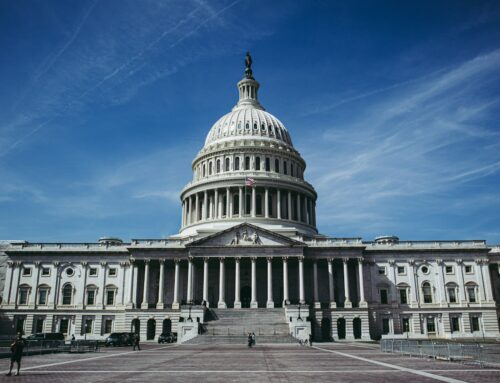President Trump’s twitter fingers unleashed a storm this week. The Trump Administration and Chinese officials have had on-again-off-again negotiations for nearly a year, looking to end a tit-for-tat trade war. With a high level Chinese delegation set to arrive in Washington on Wednesday, it appeared a final deal was at hand. But the president put that in doubt when he tweeted a threat to increase existing tariffs from 10 to 25 percent on $200 billion worth of goods from China and extend tariffs on the remaining $325 billion of goods imported from China not currently taxed. While this has put a damper on hopes of cooling tensions with America’s #1 trading partner and roiled financial markets, the greater threat is its further proof that tariffs and the damage they inflict on taxpayers is likely to increase.
It should be clear by now that the Trump Administration loves tariffs. Tariffs and threats of tariffs have played a central role in the president’s trade and foreign policies. The president used tariffs on steel and aluminum to in an attempt to protect steel manufacturers. The president threatened Turkey with tariffs if it did not release American pastor Andrew Brunson. While touting progress on a new trade deal with Mexico and Canada, one which would reduce tariffs, he threatened to increase tariffs if Mexico did not reduce the number of migrants crossing the Mexico-U.S. border. By his own account he is the Tariff Man, a point he reiterated this week in a meeting with Senate Republicans. He has also lauded the revenue that tariffs raise for the government. The president believes tariffs are key to forcing other governments to negotiate new trade deals.
But all the evidence indicates that use of tariffs is actually hindering new trade deals and reducing economic activity. The Farm Foundation recently reported that the NAFTA 2.0 agreement, which still hasn’t been passed, will expand U.S. exports by $450 million. The export boon is more than overshadowed by the impact of retaliatory tariffs imposed by Canada and Mexico in response to the U.S. imposition of steel and aluminum tariffs. The retaliatory tariffs will cause American agricultural exports to decline by $1.8 billion. President Trump, despite saying that tariffs are a short-term tool to bring our trading partners to the table to negotiate better trade deals, refuses to eliminate tariffs even after an agreement has been reached. The administration’s refusal to lift steel and aluminum tariffs after signing a preliminary deal with Canada and Mexico is putting Congressional adoption of that deal at risk. Canada is even considering new retaliatory tariffs on U.S. products.
President Trump’s twilight zone of tariffs is becoming costly, especially for U.S. agriculture. China, formerly the largest market for U.S. ag exports, is projected to drop to fifth place this year with purchases of only $9 billion. That is less than half the volume before the trade conflict started in 2018 and was projected before the latest threat of increased tariffs. The administration responded to these lost sales by directing $12 billion in unbudgeted subsidies to farmers affected by the trade war. The depressed economic activity for farming and ranching businesses was cited ad nauseam as a reason to adopt an $867 billion farm bill last December. And it’s being revived now as a reason to pass at least $3 billion in additional “emergency” income subsidies in a supplemental spending bill. The pain may soon spread much further afield than agriculture. The love of tariffs makes it increasingly likely that the Trump Administration will follow through on threats to unleash tariffs on imported cars and auto parts to put pressure on the European Union. This would put $360 billion of imports at risk, affecting consumers in every state, and potentially adding $1,800 or more to the price of every new car.
Tariffs are a tax on the American people. It’s unequivocally false when President Trump insists that other countries pay for the tariffs that he imposes. In reality, when a tariff is placed on a product, the company or individual that purchases that product pays for that tariff. Companies may choose to absorb that cost or pass it on to consumers, but no government pays the bill. So not only has the president taxed American businesses and consumers, other countries have retaliated with their own tariffs, reducing foreign business appetite for American products. And it’s one of the reasons the U.S. experienced a record trade deficit in goods of $891 billion in 2018. This is a prime example of governments picking winners and losers instead of businesses succeeding on their own merit. And the president’s tweets and actions show this trade war is far from over.
Congress needs to legislate an end to President Trump’s disastrous trade war and take back their power of the purse. This is an essential power that Congress should use to prevent damaging trade policies that could hurt our economy, farmers, American workers, and consumers. Most importantly, they should tackle the China problem with our allies whom all face the same challenges, rather than act unilaterally and fight trade wars on multiple fronts.











Get Social